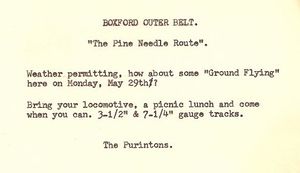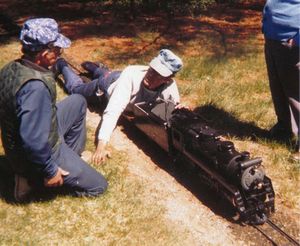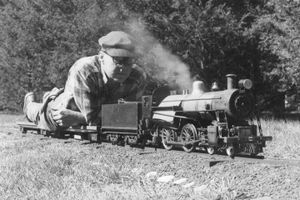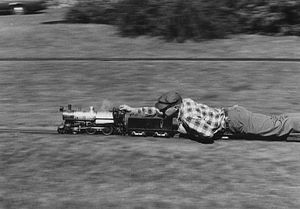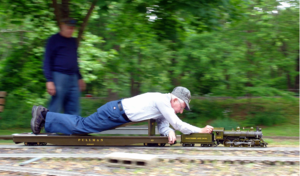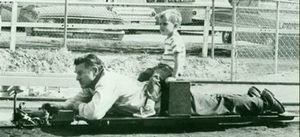Ground Flying: Difference between revisions
No edit summary |
No edit summary |
||
| Line 13: | Line 13: | ||
File:Carl BOB MacMillan 010.jpg|Carl Purinton "ground flying" on his 3-1/2" gauge Boxford Outer Belt track. Photo by Bob MacMillan. | File:Carl BOB MacMillan 010.jpg|Carl Purinton "ground flying" on his 3-1/2" gauge Boxford Outer Belt track. Photo by Bob MacMillan. | ||
File:BobThomas GroundFlying 2006.PNG|Bob Thomas runs his 2½” gauge B&O Tenwheeler at the PLS 2006 Spring Meet. Photo by Bruce Saylor. From "The PLS Gazette", Jan-Feb 2011. | File:BobThomas GroundFlying 2006.PNG|Bob Thomas runs his 2½” gauge B&O Tenwheeler at the PLS 2006 Spring Meet. Photo by Bruce Saylor. From "The PLS Gazette", Jan-Feb 2011. | ||
File:OscarHueter 34 Invicta BLS1970LALS.jpg|[[Oscar Hueter]] and his 3/4" Invicta. From the 1970 BLS meet at [[Los Angeles Live Steamers|LALS]]. Oscar was from the Bay area. Posted on <i>Chaski.org</i> by D Willoughby. | |||
</gallery> | </gallery> | ||
Revision as of 14:09, 12 May 2015
Ground Flying is a term coined by Carl Purinton to describe the sensation of operating a live steam locomotive while laying on a flatcar close to the ground. This riding posture lowers the rider's center of gravity, thus stabilizing the rider and allowing much higher speed of operation.
Ground flying was "invented" at Carl's track in Boxford, Mass. and referred specifically to the 3-1/2" gauge equipment.
The "ground flying' was referring to the 3-1/2" gauge track. It was more comfortable to lie down on a long flat car and run your locomotive than to sit upright as the balance was tedious. Because many of us laid down to run, we could go faster. There have been many speed records on that little track! A lot of fun!
October 5, 1974. It was a beautiful day at Carl Purinton's track in Boxford. Dick Symmes & Bob Hornsby were running their 3-1/2" gauge locomotives. Dick took this photo while Bob went roaring by. They found it easier to run with more stability lying down on these small trains, plus they could go faster and be safe.
Oscar Hueter and his 3/4" Invicta. From the 1970 BLS meet at LALS. Oscar was from the Bay area. Posted on Chaski.org by D Willoughby.
